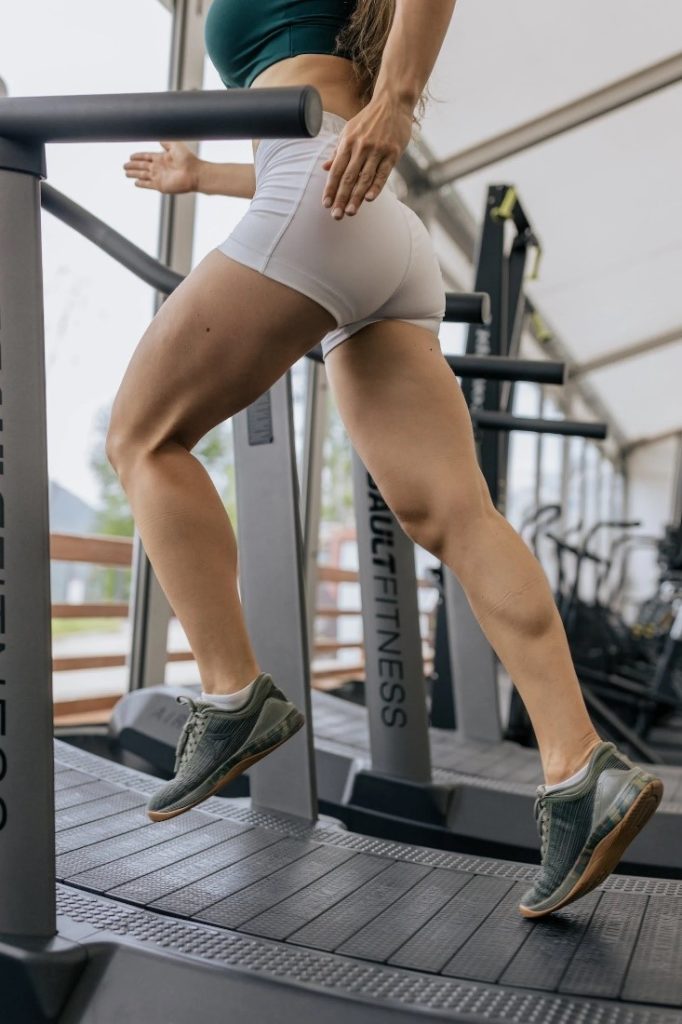How to Obtain the Perfect Legs
Obtaining the “perfect legs” may mean different things to different people, as everyone has their own individual preferences and goals.

Here are some general tips that can help you achieve strong, healthy, and toned legs:
- Incorporate strength training: Resistance training exercises, such as squats, lunges, and leg presses, can help build muscle and increase strength in your legs. Aim to train your legs at least twice a week.
- Include cardiovascular exercise: Cardio exercises like running, cycling, or swimming can help improve endurance and burn calories, which can contribute to overall leg toning. Aim for at least 150 minutes of moderate-intensity cardio per week.
- Eat a healthy and balanced diet: Eating a balanced diet with a focus on whole foods can help provide your body with the nutrients it needs for optimal health and performance. Eating a healthy and balanced diet is important for achieving perfect legs, as well as maintaining overall health and wellness. Here are some tips to help you eat a healthy and balanced diet to achieve perfect legs:
- Eat a variety of nutrient-dense foods: Include a variety of nutrient-dense foods in your diet, such as fruits, vegetables, whole grains, lean protein, and healthy fats. These foods will provide your body with the vitamins, minerals, and nutrients it needs to support healthy legs and overall health.
- Watch your portion sizes: Eating too much of any type of food can lead to weight gain and make it more difficult to achieve perfect legs. Watch your portion sizes and aim to eat until you are satisfied, not until you are stuffed.
- Drink plenty of water: Drinking plenty of water can help keep your body hydrated and support healthy legs. Aim to drink at least 8 glasses of water per day, and more if you are active or live in a hot climate.
- Limit your intake of processed foods: Processed foods, such as packaged snacks and fast food, are often high in calories, unhealthy fats, and added sugars. Limit your intake of these foods and instead focus on whole, unprocessed foods.
- Incorporate healthy fats into your diet: Healthy fats, such as those found in nuts, seeds, avocado, and fatty fish, can help support healthy legs and overall health. Aim to incorporate these foods into your diet on a regular basis.
Remember that achieving perfect legs is not just about what you eat, but also about staying active and taking care of your body. In addition to eating a healthy and balanced diet, be sure to engage in regular exercise and get plenty of rest and recovery.

Get enough rest and recovery.
Adequate rest and recovery are important for muscle growth and repair. Make sure to give your legs enough time to rest between workouts and prioritize getting enough sleep and reducing stress levels. Getting enough rest and recovery is crucial for achieving the perfect legs, as it allows your muscles time to repair and grow stronger.
Here are some tips on how to ensure adequate rest and recovery for your legs:
- Take rest days: Give your leg muscles at least one day of rest each week. This allows them to recover from the stress of exercise and rebuild stronger.
- Get enough sleep: Aim for at least 7-8 hours of sleep per night. During sleep, your body repairs and regenerates muscle tissue, which is essential for muscle growth.
- Stretch after exercise: Stretching after exercise helps to improve flexibility and range of motion, as well as reduce muscle soreness and prevent injury.
- Use a foam roller: Foam rolling can help to release muscle tension and improve circulation, which can aid in recovery and reduce soreness.
- Fuel your body properly: Eating a balanced diet that includes plenty of protein, complex carbohydrates, and healthy fats can help to support muscle growth and repair.
By incorporating these tips into your routine, you can ensure that your leg muscles are getting the rest and recovery they need to grow stronger and achieve the perfect legs.

Stretch regularly
Stretching can help improve flexibility and range of motion, which can help reduce the risk of injury and improve overall leg function. Make sure to stretch your legs before and after exercise and consider incorporating yoga or other stretching-focused activities into your routine. Stretching regularly can be helpful in achieving better flexibility and muscle tone in your legs. Regular stretching can help improve the range of motion in your legs, reduce muscle tension and soreness, and prevent injuries. Here are some stretching exercises you can try to improve your leg flexibility and tone:
- Hamstring stretch: Sit on the floor with your legs straight out in front of you. Reach forward and try to touch your toes. Hold the stretch for 30 seconds and then release.
- Quadriceps stretch: Stand with your feet hip-width apart. Bend your right knee and bring your heel towards your buttocks. Hold onto your ankle with your right hand and hold the stretch for 30 seconds. Repeat on the other side.
- Calf stretch: Stand facing a wall and place your hands on the wall. Step your left foot back and press your heel down towards the floor. Hold for 30 seconds and then switch sides.
- Pigeon pose: Start in a plank position, then bring your right knee towards your right hand, placing your ankle on your left wrist. Slowly lower your body towards the floor, holding the stretch for 30 seconds. Switch sides.
Remember to always warm up before stretching and to never push yourself too hard, as this can lead to injury. Incorporating stretching into your daily routine can help improve your leg flexibility and muscle tone over time.

Everyone’s body is different, and what works for one person may not work for another. To achieve perfect legs, be patient and consistent with your efforts and be sure to listen to your body and adjust your routine as needed.